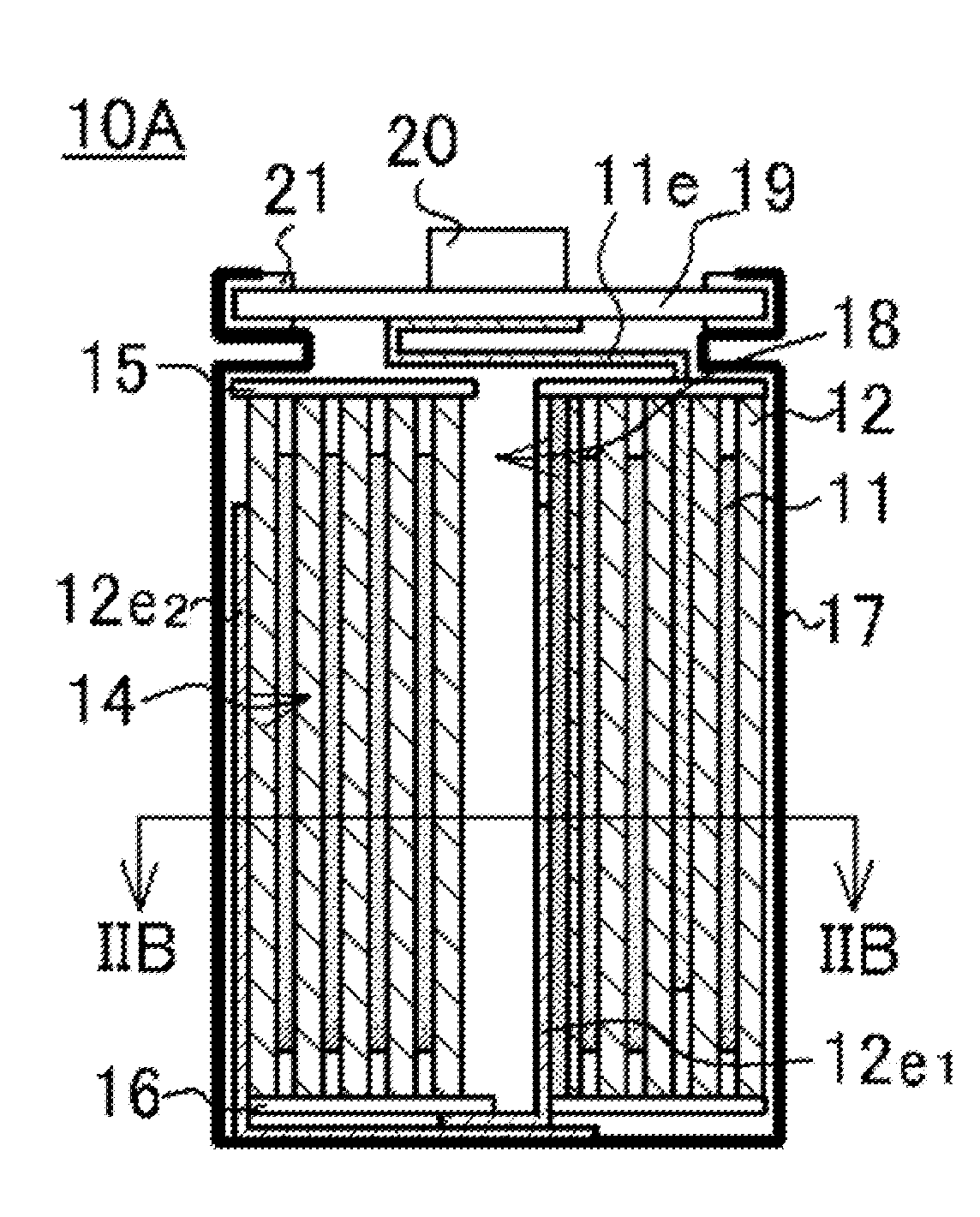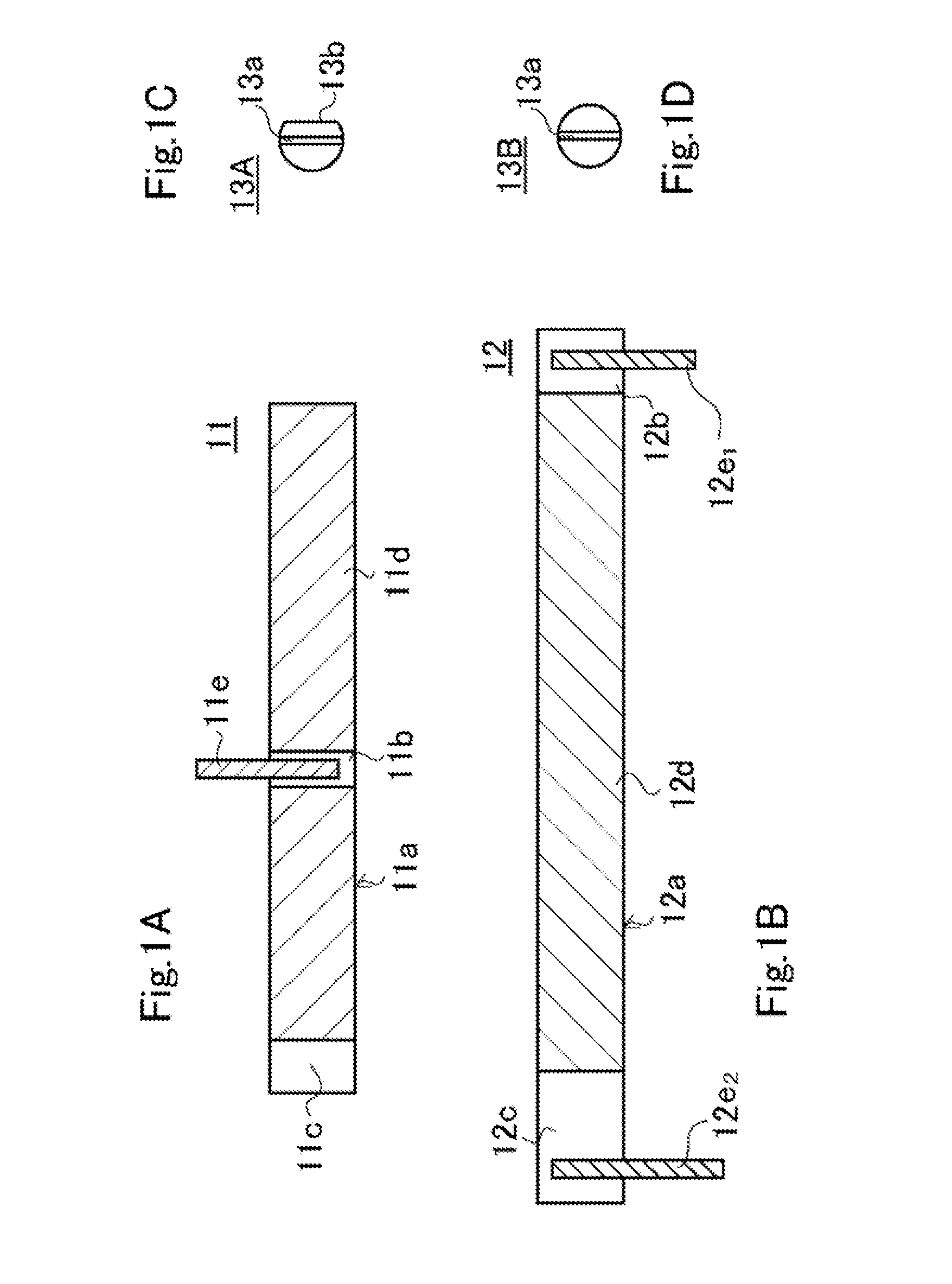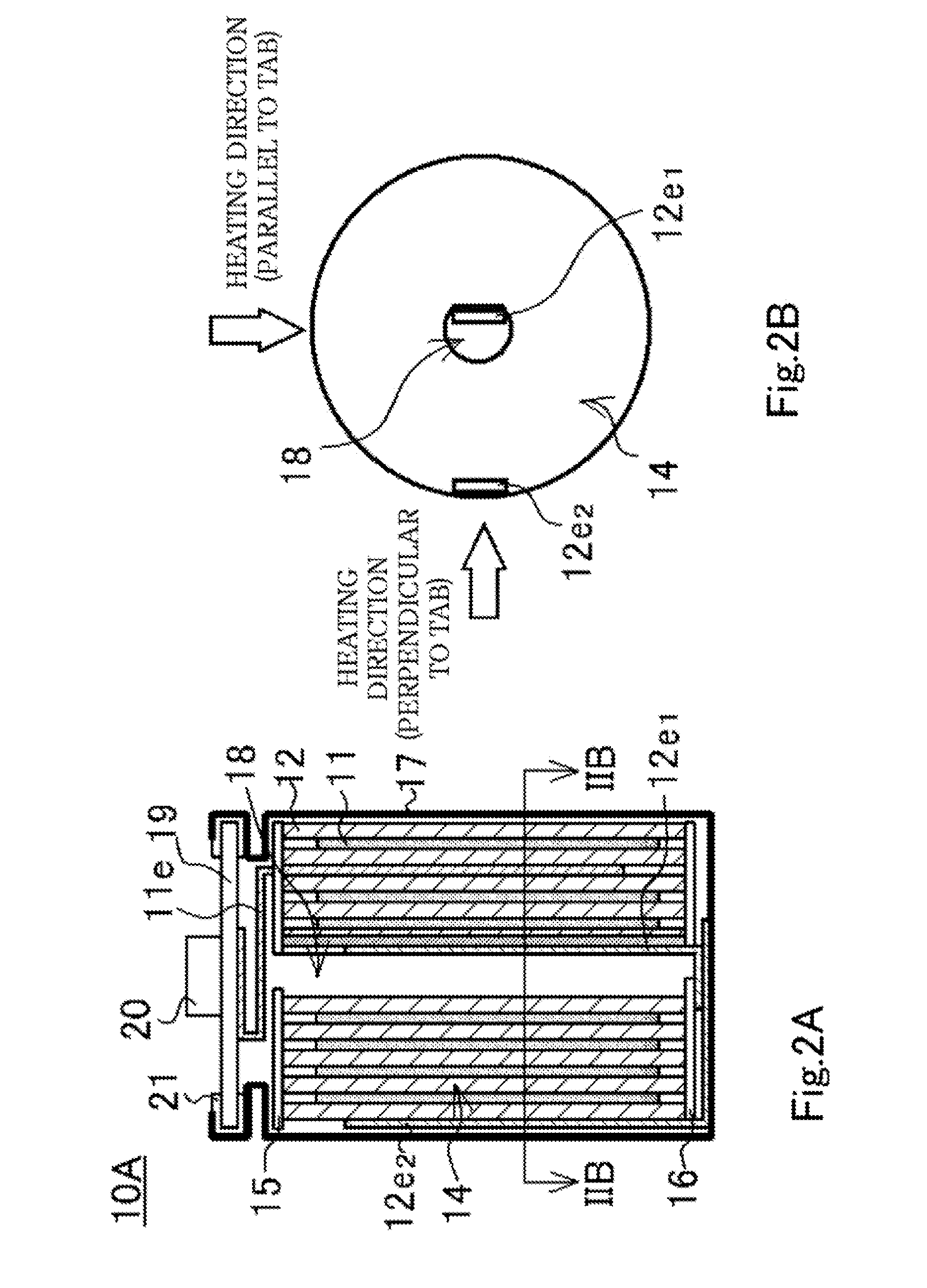Nonaqueous electrolyte secondary battery
a secondary battery and electrolyte technology, applied in the direction of wound/folded electrode electrodes, cell components, sustainable manufacturing/processing, etc., can solve the problems of increased parts, increased internal pressure of the battery, and increased production costs, so as to achieve excellent safety and reliability, and the physical strength of the first collector tab is extremely large.
- Summary
- Abstract
- Description
- Claims
- Application Information
AI Technical Summary
Benefits of technology
Problems solved by technology
Method used
Image
Examples
Embodiment Construction
[0037]An embodiment for carrying out the present invention will be described below in detail using each example and comparative example. The examples below show examples of a cylindrical nonaqueous electrolyte secondary battery as a nonaqueous electrolyte secondary battery for embodying the technical idea of the present invention and is not intended to specify the present invention as the cylindrical nonaqueous electrolyte secondary battery. The present invention is equally applicable to various modifications without departing from the technical idea shown in the scope of claims. In each drawing used for illustration in the specification, the members are shown in different scales as appropriate so that each member is in a size recognizable in the drawing, and are not necessarily shown in proportion to the actual dimensions.
[0038]First, using FIG. 1, the following describes a configuration of a positive electrode plate, a negative electrode plate, and a nonaqueous electrolyte common ...
PUM
| Property | Measurement | Unit |
|---|---|---|
| thickness | aaaaa | aaaaa |
| thickness | aaaaa | aaaaa |
| thickness | aaaaa | aaaaa |
Abstract
Description
Claims
Application Information
 Login to View More
Login to View More - R&D
- Intellectual Property
- Life Sciences
- Materials
- Tech Scout
- Unparalleled Data Quality
- Higher Quality Content
- 60% Fewer Hallucinations
Browse by: Latest US Patents, China's latest patents, Technical Efficacy Thesaurus, Application Domain, Technology Topic, Popular Technical Reports.
© 2025 PatSnap. All rights reserved.Legal|Privacy policy|Modern Slavery Act Transparency Statement|Sitemap|About US| Contact US: help@patsnap.com



